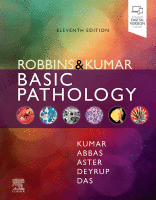Physical Address
304 North Cardinal St.
Dorchester Center, MA 02124

The contributions to this chapter by Dr. Alexander J. Lazar, Department of Pathology, MD Anderson Cancer Center, Houston, Texas, in several previous editions of this book are gratefully acknowledged. Skin disorders are common and diverse, ranging from irritating itching to…

The contributions to this chapter by Dr. Matthew P. Frosch, Department of Pathology, Massachusetts General Hospital, Harvard Medical School, Boston Massachusetts, and Dr. Robert Folberg in several previous editions of this book are gratefully acknowledged. The principal focus of this…

The contributions to this chapter by Dr. Peter Pytel, Department of Pathology, University of Chicago, in several previous editions of this book are gratefully acknowledged. The peripheral nerves and skeletal muscles permit purposeful movement and provide the brain with sensory…

The contributions to this chapter by Dr. Andrew Horvai, Department of Pathology, University of California, San Francisco in the previous edition of this book are gratefully acknowledged. Bone Structure and Function of Bone Bone provides mechanical support for the body,…

The contributions to this chapter by Dr. Anirban Maitra, Professor of Pathology and Translational Molecular Pathology, The University of Texas, MD Anderson Cancer Center, Houston, Texas, in several previous editions of this book are gratefully acknowledged. Endocrine organs (also called…

The contributions to this chapter by Dr. Lora Hedrick Ellenson, Department of Pathology, Memorial Sloan Kettering Cancer Center, New York City, New York, and Dr. Susan C. Lester, Department of Pathology, Brigham and Women's Hospital, Harvard Medical School, Boston, Massachusetts,…

Penis Malformations Among the most common malformations of the penis are those in which the distal urethral orifice is abnormally located, either on the ventral (hypospadias) or dorsal (epispadias) aspect of the penis. The anomalous orifice may be constricted, resulting…

The contributions to this chapter by Dr. Anirban Maitra, University of Texas, MD Anderson Cancer Center, Houston, Texas, in previous editions of this book are gratefully acknowledged. The pancreas is a transversely oriented retroperitoneal organ extending from the so-called “C…

Liver The contributions to this chapter by Dr. Neil D. Theise, Department of Pathology at NYU Grossman School of Medicine, New York, New York, and the late Dr. Nelson Fausto, Department of Pathology, University of Washington, Seattle, Washington, in previous…

The contributions to this chapter by Dr. Jerrold R. Turner, Department of Pathology, Brigham and Women's Hospital, Boston, Massachusetts, in several previous editions of this book are gratefully acknowledged. The gastrointestinal tract is a hollow tube consisting of the esophagus,…